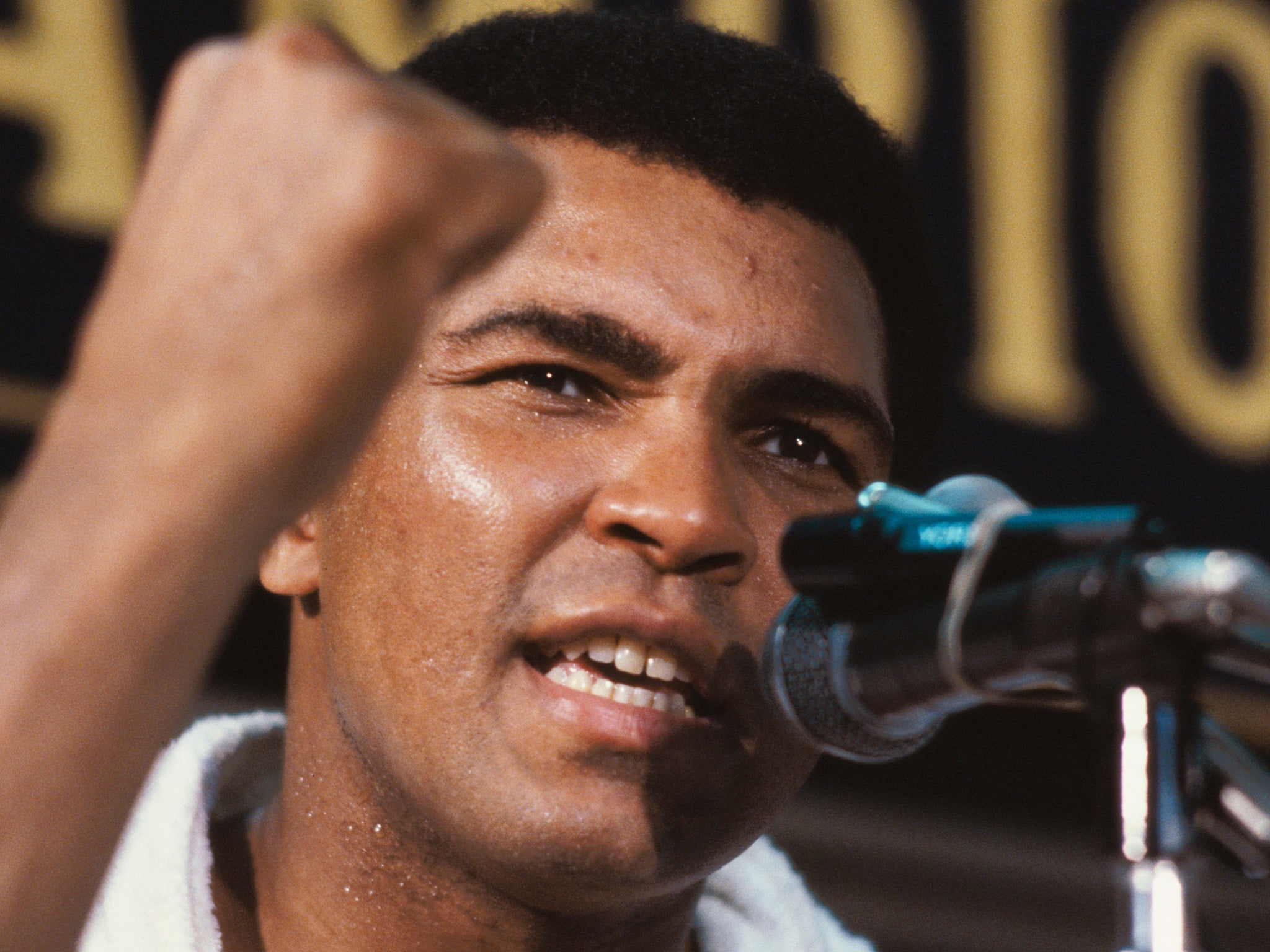Muhammad Ali: The boxing icon's incredible life in pictures
Friends said his 'spirit would live on' after he died aged 74

Friends of Muhammad Ali have said his spirit and legacy will live on as tributes pour in from around the world.
The former world heavyweight boxing champion died on Friday aged 74 in Phoenix, Arizona, after being hospitalised with respiratory problems days earlier.
“It's a sad day for life…Ali will never die,” Don King, who promoted some of his biggest fights, said. “Like Martin Luther King his spirit will live on, he stood for the world.”
Born Cassius Marcellus Clay on 17 January 1942, Ali began boxing aged 12 after his new bicycle was stolen and he vowed to a policeman that he would “whup” the person who took it.
Ali went on to dominate the sport for two decades before time and Parkinson's Syndrome ended his storied career in 1981.
He won and defended the heavyweight championship in epic fights in exotic locations, became a figurehead for the civil rights movement, and famously refused to be drafted into the Army during the Vietnam War.
He fought in three different decades, finished with a record of 56-5 with 37 knockouts and was the first man to win heavyweight titles three times.
But it was as much his life outside the ring that transformed him into a household name.
He joined the Nation of Islam movement, then called the Black Muslims, in 1964 after striking up a friendship with Malcolm X and converted to Islam in 1975.

Ali was convicted of refusing to serve in the Vietnam War in 1967, sparking a boxing ban, but the decision was overturned in the Supreme Court four years later after judges decided he should be legally exempt as a conscientious objector.
He was married four times – to Sonji Roi in 1964, Belinda Boyd in 1967, Veronica Porsche in 1977 and Yolanda “Lonnie” Williams in 1986 – and had seven daughters and two sons.
Ali became known for his charity and humanitarian work and his later years, visiting Iraq and meeting Saddam Hussein in 1990, returning to the US with 15 American hostages.
But his movement became limited as the Parkinson’s syndrome he was diagnosed with in the 1980s worsened – a condition he attributed to head trauma sustained during botching.
“What I suffered physically was worth what I've accomplished in life,” he said in 1984. “A man who is not courageous enough to take risks will never accomplish anything in life.”
Additional reporting by AP
Join our commenting forum
Join thought-provoking conversations, follow other Independent readers and see their replies
Comments